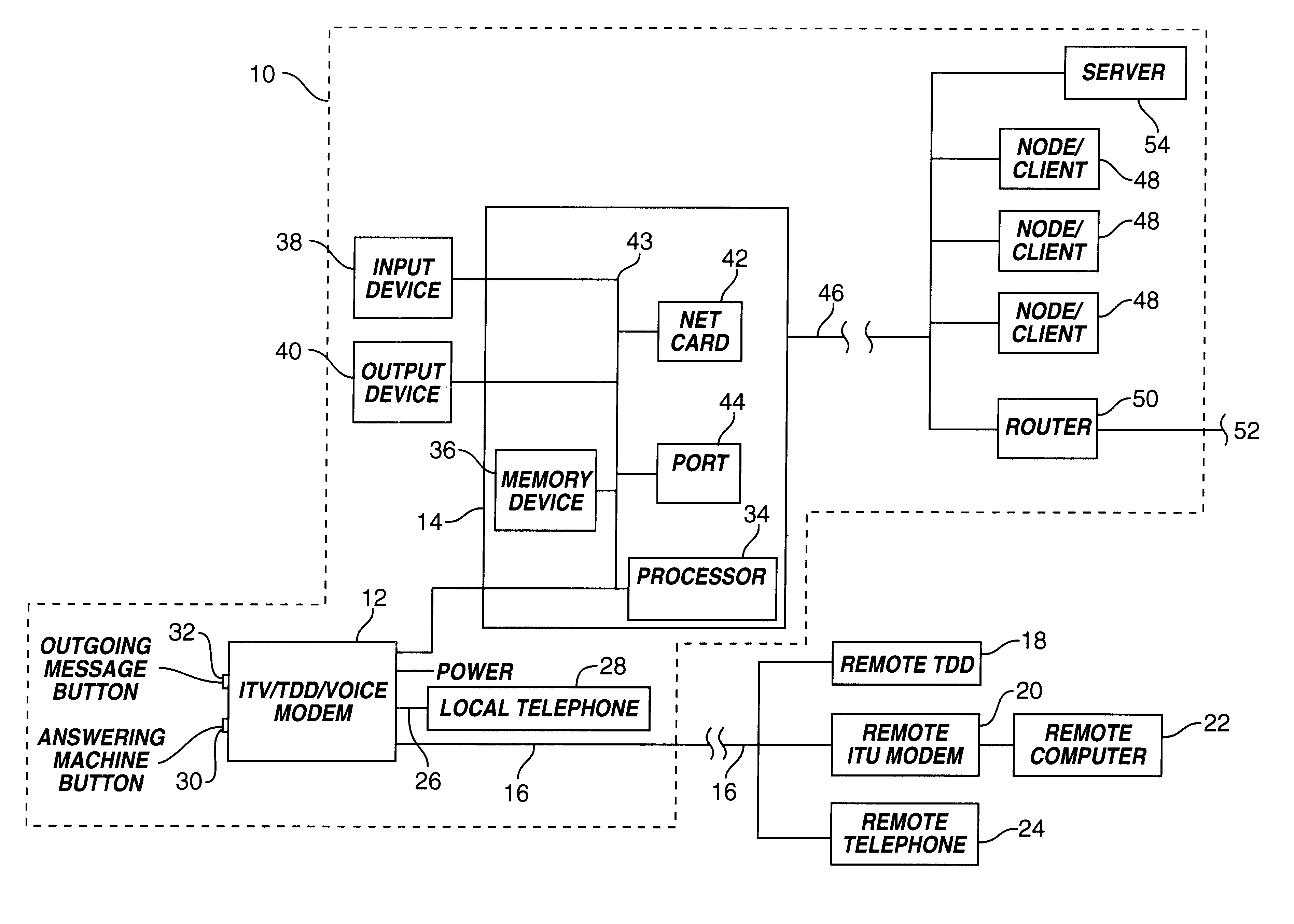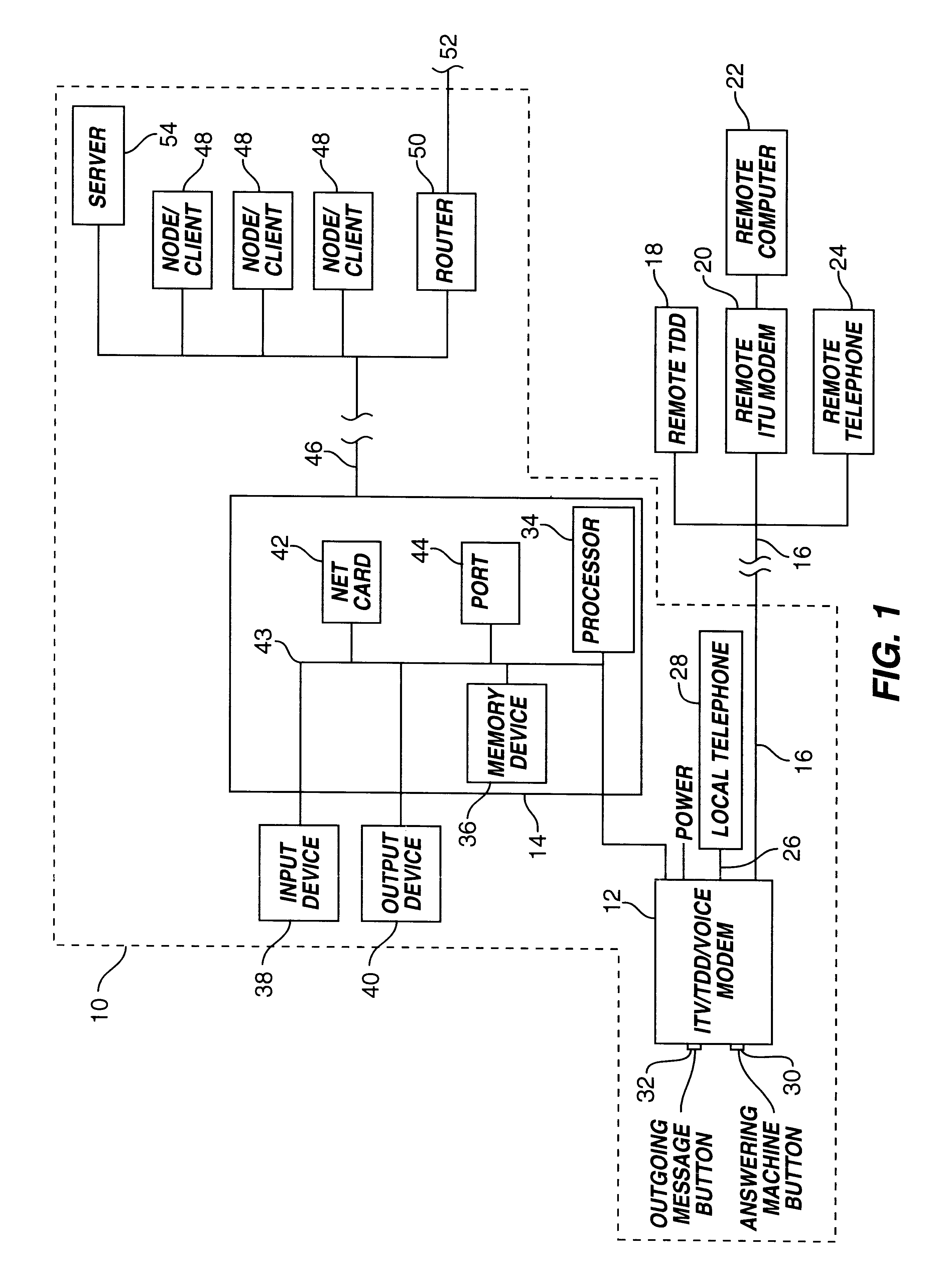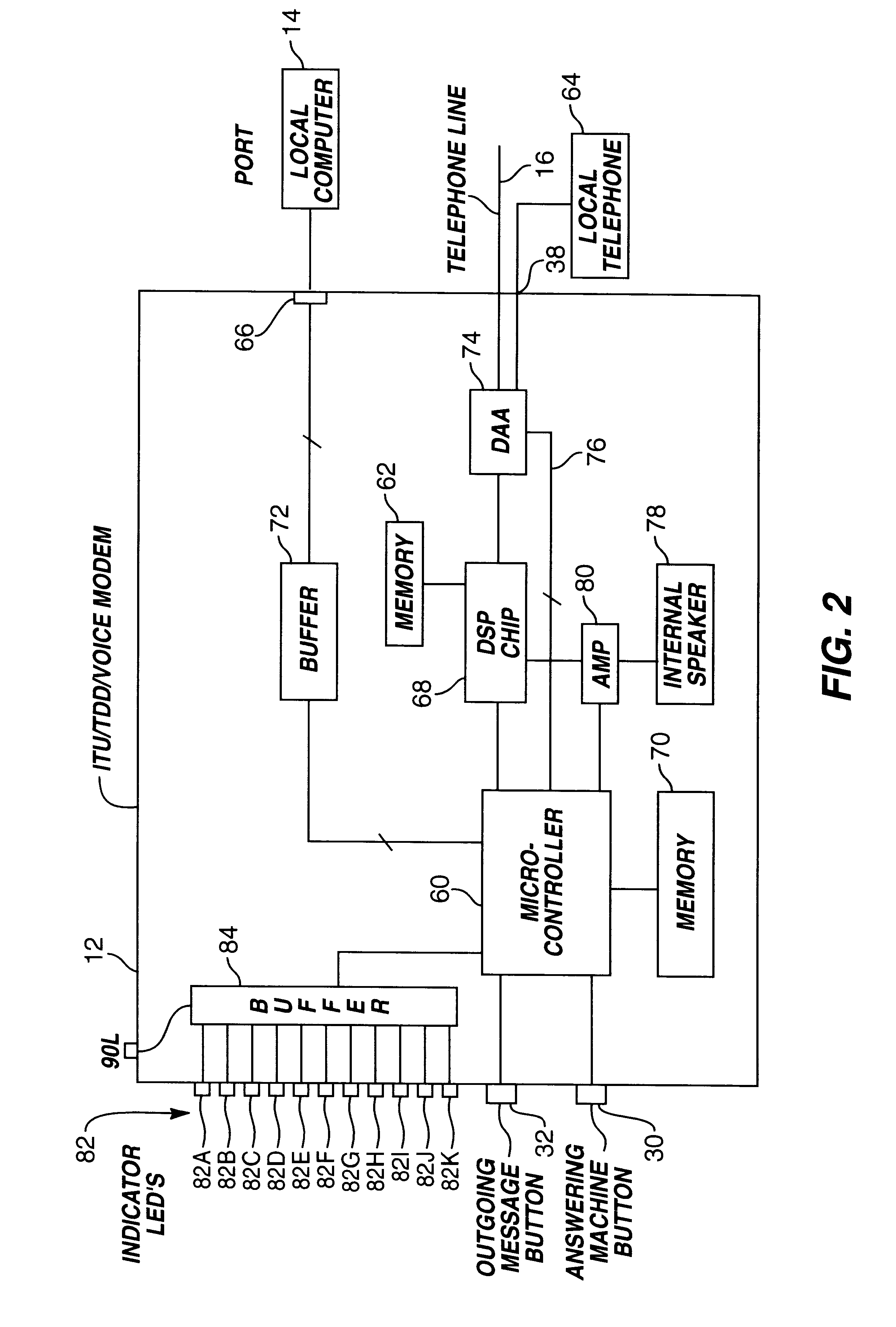Network communication system
a communication system and network communication technology, applied in the field of network communication system, can solve the problems of poor provision for communication by the deaf or speech impaired, the standard modem has evolved, and is largely unsuitable for this purpos
- Summary
- Abstract
- Description
- Claims
- Application Information
AI Technical Summary
Problems solved by technology
Method used
Image
Examples
Embodiment Construction
The present invention described herein may include hardware and features discussed in U.S. Pat. No. 5,687,222 issued Nov. 11, 1997 which is incorporated herein by reference.
Referring to FIG. 1, the network communication system 10 includes a modem 12 which may be a standard modem. Alternatively, the modem 12 may be embodied as an ITU / TDD modem which is defined herein as a modem compatible with standard modems and one or more of the `text telephone` standards used by the deaf. Examples of such text telephones standards are the 45 / 50 bps Baudot TTY's used by the deaf in the U.S., Canada, Australia, etc. or the EDT (European Deaf Telephones) used in certain countries. The modem 12 may also be embodied as an ITU / TDD / VOICE modem 14 which allows transmission and reception of ITU, TDD, and voice signals over a telephone line to and from a remote device. Voice signals could be stored on tape or in electronic memory. The modem 12 could also include ITU (or other standard modem) capabilities w...
PUM
 Login to View More
Login to View More Abstract
Description
Claims
Application Information
 Login to View More
Login to View More - R&D
- Intellectual Property
- Life Sciences
- Materials
- Tech Scout
- Unparalleled Data Quality
- Higher Quality Content
- 60% Fewer Hallucinations
Browse by: Latest US Patents, China's latest patents, Technical Efficacy Thesaurus, Application Domain, Technology Topic, Popular Technical Reports.
© 2025 PatSnap. All rights reserved.Legal|Privacy policy|Modern Slavery Act Transparency Statement|Sitemap|About US| Contact US: help@patsnap.com



